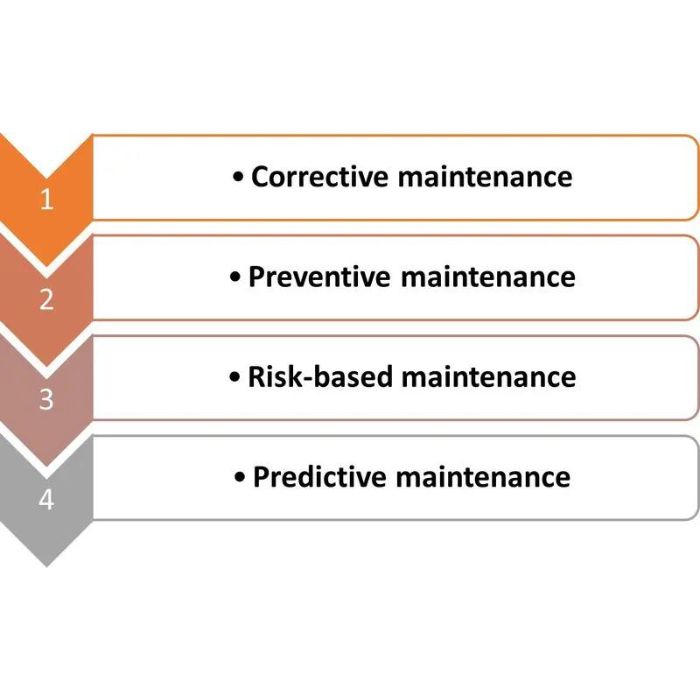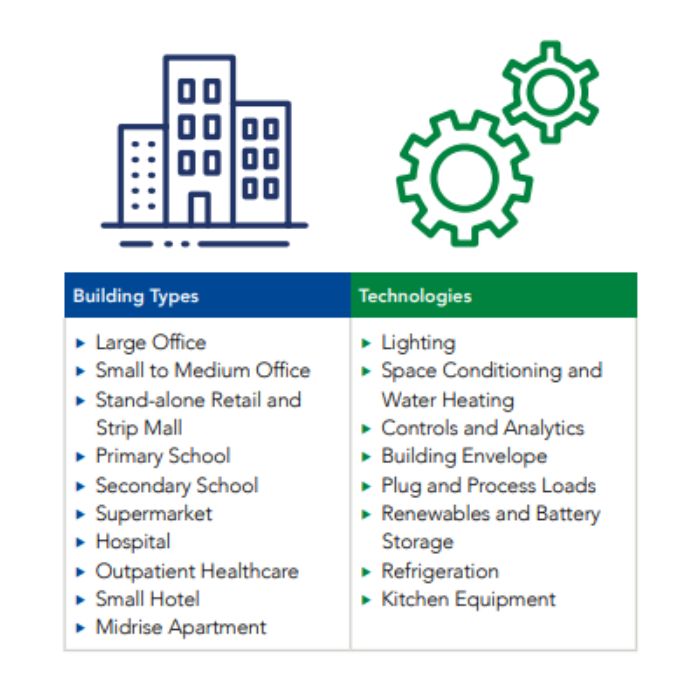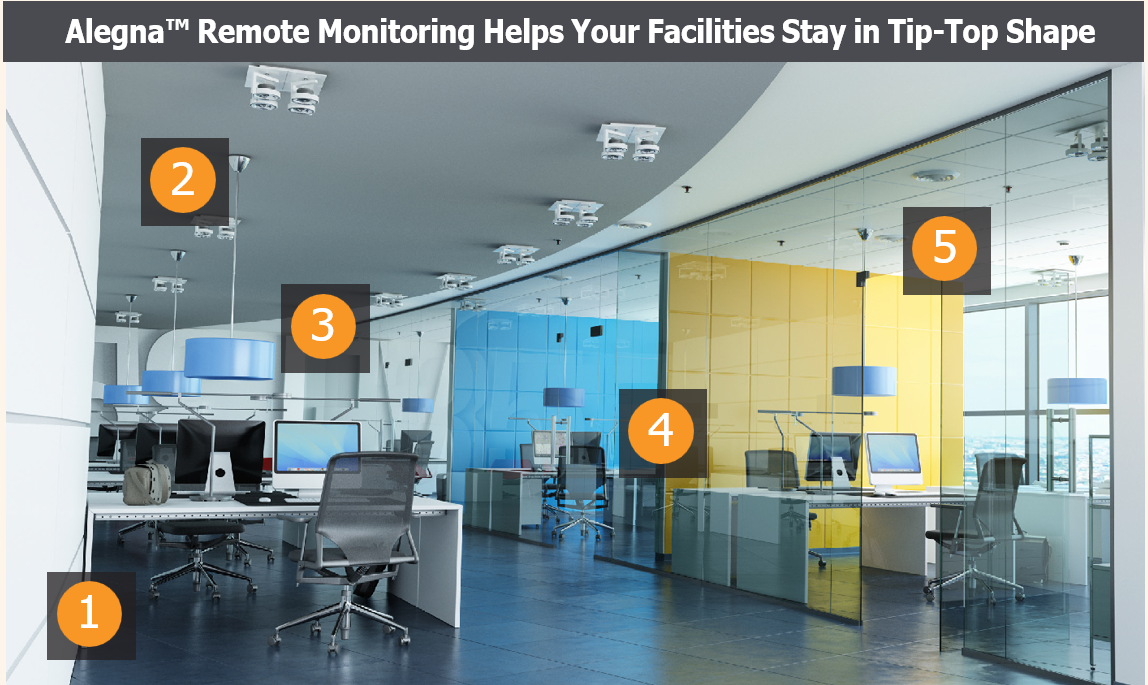What Are the Effects and Unnecessary Costs of Unscheduled Equipment Downtime in Healthcare?
Studies estimate downtime at around $9,000 per minute, with larger organizations facing hundreds of thousands per hour. In 2023, these costs have risen, pressuring companies to minimize downtime and enhance disaster recovery plans. Sep 19, 2023. More info:
SOLUTION-AS AN INSURANCE POLICY: Alegna™ has developed a cutting-edge IoT system with advanced remote early warning preventive maintenance capabilities and a holistic approach to building automation. This system is seamlessly integrated and user-friendly. Utilizing AI-powered smart sensors and controls, it promptly notifies the management team of any issues via text messages, email, and phone calls. Unlike relying on a potentially biased third party, who may seek to upsell other parts or services (i.e. HVAC+).
Alegna’s IoT AlegnaSense™ system ensures alerts reach the appropriate personnel directly. It eliminates the risk of issues being concealed due to the inadequate maintenance of contracted services, which would not serve the best interest of the organization. By adopting Alegna’s solutions, you can avoid having a potentially harmful presence within your operations.
Access real-time data and ensure complete transparency. Implement solutions that enable proactive management, preventing equipment downtime in critical scenarios. By minimizing risks and avoiding unnecessary costs, you can demonstrate an immediate return on investment. Choose solutions that prioritize efficiency and effectiveness that guarantee the true reality and accuracy of your operations.
ADDITIONAL SOLUTIONS:
- Reduce Unplanned Downtime And Risks: Predict asset failure and initiate action to avoid breakdowns.
- Reduce Maintenance Costs: Avoid over-maintaining assets by enabling scheduled maintenance before failure based on early warnings.
- Improve Asset Utilization: Enable more efficient use of existing assets when you can predict maintenance issues and reduce failures on the job.
- Extend Asset Life: Identify operational performance factors and improve maintenance practices and reliability.
- Increase Production Output: Make equipment and processes more efficient and dependable to deliver higher output.
Automate with your staff or Alegna can do it for you!
In the fast-changing world of AI and automation, knowledge is power and foresight gives you an edge.
Remote Control: Automation allows for remote monitoring and management of building systems, enabling quick response to issues without the need for physical presence. Receive alerts Reduce rising medical costs, global economic downturn, and staff burnout. Learn how automation helps build a resilient, innovative healthcare organization. Enterprise automation.
Automating hospital buildings can offer and provide a wide range of benefits that contribute to improved efficiency, cost savings, enhanced patient care, and overall better healthcare delivery.

Reasons why hospitals may choose to automate their buildings:






1. Energy Efficiency:
Automation systems can help hospitals optimize energy usage by controlling lighting, heating, ventilation, and air conditioning (HVAC) systems based on occupancy and usage patterns. This can result in significant benefits:
- Cost Savings: Automated lighting, heating, ventilation, and air conditioning (HVAC) systems can optimize energy usage, leading to significant cost savings on utility bills.
- Environmental Impact: Reduced energy consumption contributes to a smaller carbon footprint, aligning with sustainability goals.
2. Improve Operational Efficiency:
- Maintenance Planning: Predictive maintenance through automation can identify equipment issues before they lead to major failures, minimizing downtime and reducing maintenance costs.
- Automation can streamline various processes within a hospital, including facility management, security, and inventory control. For instance, automated systems can track and manage equipment, monitor security systems, and control access to restricted areas, reducing the workload on staff and improving overall operational efficiency.
3. Cost-Effective Scalability / Cost Savings:
- Automated systems can help hospitals manage resources more efficiently, ensuring that equipment and facilities are used optimally, leading to cost savings in terms of energy, maintenance, and operational expenses. For example, smart building technologies can identify and address equipment issues before they become major problems, preventing costly repairs and downtime.
- Scalability: Automation systems can be scaled to accommodate the growth or changes in hospital infrastructure without requiring extensive manual modifications.
4. Enhanced Patient Experience: Automation can contribute to a more comfortable and healing environment for patients. Smart building features such as automated climate control, lighting, and entertainment systems can be customized to meet individual patient preferences, improving their overall experience during their stay.
5. Regulatory Compliance: Automation systems can help hospitals comply with various regulations and standards related to safety, security, environmental sustainability, and regulations, reducing the risks of penalties or legal issues. Automated monitoring and reporting capabilities can simplify the process of meeting compliance requirements.
6. Patient Safety and Security: Smart building technologies can enhance patient safety by monitoring environmental conditions, detecting potential hazards, and automating emergency response systems. For example, automated fire detection and suppression systems can help protect patients and staff in the event of a fire.
- Emergency Response: Automated systems can detect emergencies such as fires or security breaches and trigger appropriate responses, enhancing the safety of patients and staff.
- Access Control: Automation helps manage and control access to different areas within the hospital, ensuring that only authorized personnel have entry to restricted zones.
7. Patient Experience:
- Comfort Control: Automated climate control and lighting systems can be tailored to individual patient preferences, creating a more comfortable and healing environment.
8. Data-Driven Decision Making: Automation systems generate a wealth of data that can be analyzed to help hospital administrators make informed decisions about building operations, and optimize processes and resource allocation. This data-driven approach can help hospitals optimize their processes, reduce waste, and improve overall performance.
- Performance Monitoring: Monitoring systems can track the performance of various building components, allowing for proactive management and improvement.
9. Remote Monitoring and Management: Automated systems can be monitored and managed remotely, allowing facility managers to respond quickly to issues and make adjustments without being physically present. This is especially valuable for large hospital complexes or during emergencies.
- via text, email, and phone calls with data collected, in real-time.
10. Adaptability to Future Technologies: Automating hospital buildings makes them more adaptable to future technological advancements. As new technologies emerge, automated systems can be updated and integrated, ensuring that the hospital remains at the forefront of innovation.
11. Integration with Healthcare Systems:
- Interoperability: Automated systems can be integrated with healthcare information systems, enhancing coordination between building management and healthcare operations.
12. Adaptability to Technological Advances:
- Future-Proofing: Building automation systems can be upgraded and adapted to incorporate emerging technologies, ensuring that the hospital remains technologically advanced.
In summary, Alegna Technologies™ holistic approach in hospital building automation offers improving the efficiency, safety, and overall patient and staff experience and efficiency within healthcare facilities contributing to better healthcare delivery. These benefits contribute to a more sustainable, patient-friendly, and technologically advanced healthcare environment.

Water Detection SENSORS
Remotely monitor the relative humidity in facilities & enclosures; protect artifacts, electronics, sensitive materials, and mission-critical machines; predict maintenance and prevent problems.
OPEN-CLOSED SENSORS
Remotely monitor doors, windows, cabinets, or lid status, plus. Get an alert via text, email, or call if something’s been left ajar.
Temperature SENSORS
Remotely monitors the system to keep assets like food, vaccines, and equipment at safe and comfortable temperatures 24/7.
LIGHT SENSORS
For In/Outdoors—weatherproof, industrial-grade sensors in 20 amp, 150 amp, and 500 amp models.
CURRENT METERS
For In/Outdoors—weatherproof, industrial-grade sensors in 20 amp, 150 amp, and 500 amp models.





